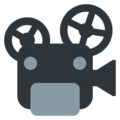How to Train, Test, and Use a LoRA Model for Character Art Consistency
Video Statistics and Information
Channel: Invoke
Views: 1,499
Rating: undefined out of 5
Keywords:
Id: ej7ruT7aF04
Channel Id: undefined
Length: 61min 59sec (3719 seconds)
Published: Thu Apr 11 2024
Please note that this website is currently a work in progress! Lots of interesting data and statistics to come.
